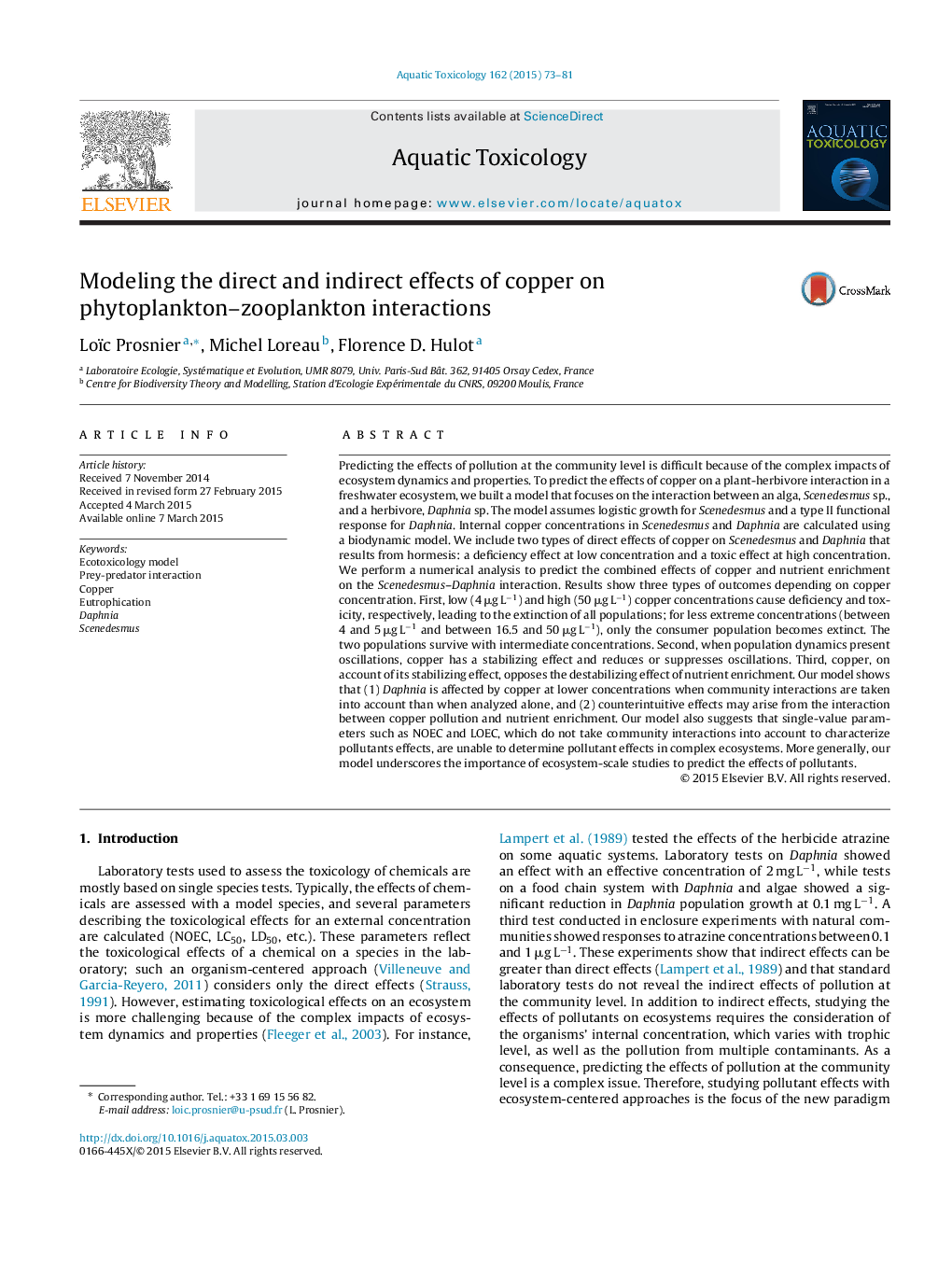| کد مقاله | کد نشریه | سال انتشار | مقاله انگلیسی | نسخه تمام متن |
|---|---|---|---|---|
| 4529106 | 1625943 | 2015 | 9 صفحه PDF | دانلود رایگان |
• We take into account copper hormetic effects in prey-predator model.
• Copper affects populations at lower concentrations when interactions are included.
• Copper and nutrient enrichment have antagonistic effect on populations’ stability.
• NOECs and LOECs are not well adapted to characterize noxious effects in ecosystems.
Predicting the effects of pollution at the community level is difficult because of the complex impacts of ecosystem dynamics and properties. To predict the effects of copper on a plant-herbivore interaction in a freshwater ecosystem, we built a model that focuses on the interaction between an alga, Scenedesmus sp., and a herbivore, Daphnia sp. The model assumes logistic growth for Scenedesmus and a type II functional response for Daphnia. Internal copper concentrations in Scenedesmus and Daphnia are calculated using a biodynamic model. We include two types of direct effects of copper on Scenedesmus and Daphnia that results from hormesis: a deficiency effect at low concentration and a toxic effect at high concentration. We perform a numerical analysis to predict the combined effects of copper and nutrient enrichment on the Scenedesmus–Daphnia interaction. Results show three types of outcomes depending on copper concentration. First, low (4 μg L−1) and high (50 μg L−1) copper concentrations cause deficiency and toxicity, respectively, leading to the extinction of all populations; for less extreme concentrations (between 4 and 5 μg L−1 and between 16.5 and 50 μg L−1), only the consumer population becomes extinct. The two populations survive with intermediate concentrations. Second, when population dynamics present oscillations, copper has a stabilizing effect and reduces or suppresses oscillations. Third, copper, on account of its stabilizing effect, opposes the destabilizing effect of nutrient enrichment. Our model shows that (1) Daphnia is affected by copper at lower concentrations when community interactions are taken into account than when analyzed alone, and (2) counterintuitive effects may arise from the interaction between copper pollution and nutrient enrichment. Our model also suggests that single-value parameters such as NOEC and LOEC, which do not take community interactions into account to characterize pollutants effects, are unable to determine pollutant effects in complex ecosystems. More generally, our model underscores the importance of ecosystem-scale studies to predict the effects of pollutants.
Journal: Aquatic Toxicology - Volume 162, May 2015, Pages 73–81
